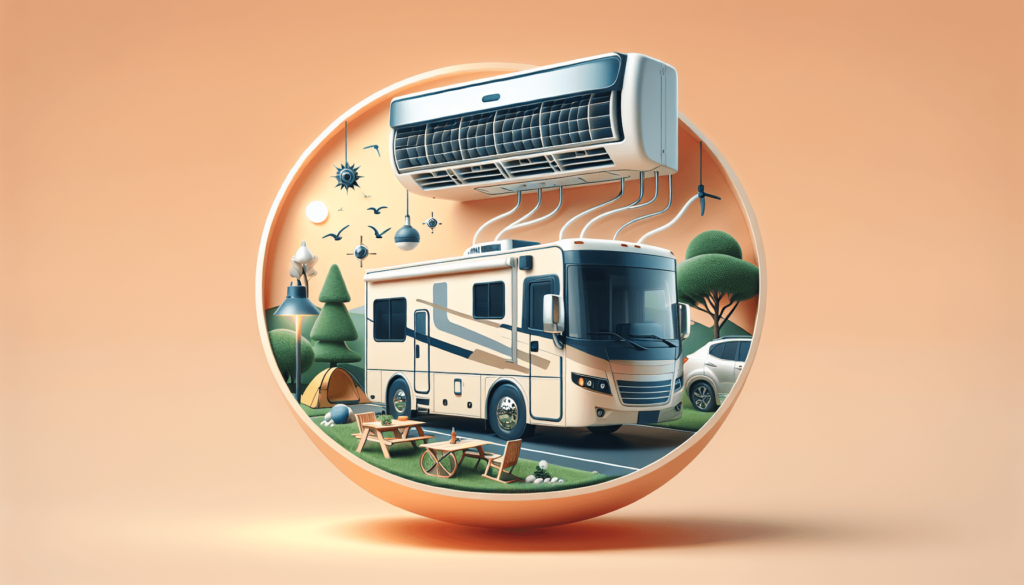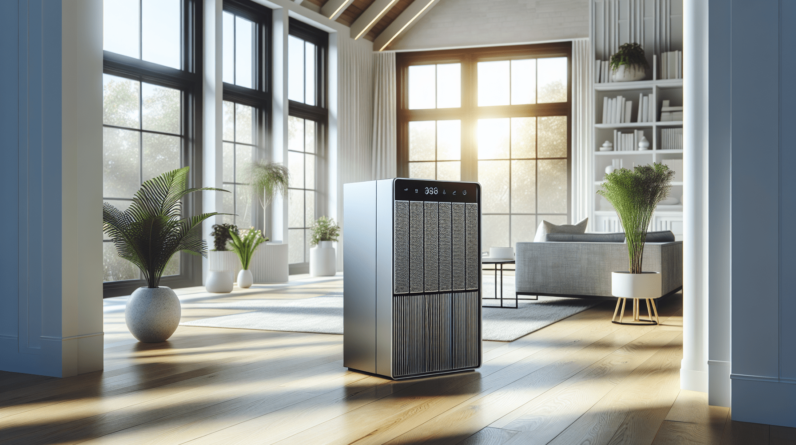

Have you ever found yourself sweating through a summer road trip, wishing for a cool breeze inside your RV?
Understanding RV Air Conditioning Units
When it comes to enjoying the comforts of home while traveling in an RV, having an air conditioning unit is often one of the most critical features to consider. RV air conditioners help regulate the temperature inside your vehicle, ensuring a comfortable environment regardless of how hot it gets outside.
Types of RV Air Conditioning Units
There are primarily two types of air conditioning units for RVs: Rooftop units and portable units. Understanding the differences can help you make a better choice suited to your traveling habits.
Rooftop Units
Rooftop air conditioning units are the most common type found in RVs. These units typically come installed by the manufacturer or can be added afterward.
-
Pros:
- Space-efficient, keeping your interior clear.
- Generally more powerful, cooling larger areas.
- Built to withstand outdoor elements.
-
Cons:
- Can be more expensive.
- Installation might require professional help.
Rooftop air conditioners usually range in BTUs (British Thermal Units), with common sizes being between 13,500 to 15,000 BTUs, ideal for most RV setups.
Portable Units
Portable air conditioners offer flexibility as you can move them around as needed. They typically don’t require installation, making them an appealing option for many RVer enthusiasts.
-
Pros:
- Easy to set up and relocate.
- Usually more affordable than rooftop units.
-
Cons:
- Less efficient in cooling larger areas.
- Takes up space inside your RV.
When selecting a portable unit, consider models that offer good energy efficiency and features like programmable settings.
Choosing the Right Size for Your RV
Selecting the appropriate size air conditioning unit for your RV is essential. An oversized unit can lead to short cycling, while an undersized unit may struggle to keep your space cool.
Calculating Cooling Needs
To ensure that you choose the right unit, calculate the BTUs needed for your specific RV size. Here’s a quick estimation method:
- Areas measuring up to 200 square feet generally require 6,000 BTUs.
- For spaces between 200-400 square feet, aim for 7,000-10,000 BTUs.
- RVs larger than 400 square feet may need over 10,000 BTUs.
Power Sources for Your AC Unit
Understanding how you will power your air conditioner is essential. Different models utilize varying power sources, and the best option will depend on your specific setup and needs.
Generator Power
If you’re frequently boondocking or venturing off the grid, a generator might be your go-to solution.
-
Advantages:
- Independent power source.
- You can run multiple appliances.
-
Disadvantages:
- Generators can be noisy.
- Fuel costs can add up.
Shore Power
If you plan on staying at RV parks with electrical hookups, shore power will be your primary power source.
-
Advantages:
- Typically cheaper than generator fuel.
- Consistent power supply.
-
Disadvantages:
- Limited only to locations with hookups.

Installation Considerations
Installing an air conditioning unit in your RV can vary considerably based on the type you select.
Rooftop AC Installation
- Installation Kit: Ensure you have an installation kit that includes seals, screws, and ductwork.
- Mounting: Follow specific manufacturer instructions, as rooftops can differ significantly in structure and orientation.
If you’re not handy, consider hiring a professional to avoid damaging your RV.
Portable AC Setup
Setting up a portable air conditioner is usually a straightforward process. You’ll need to position it close to a window or vent for effective ventilation.
Maintenance Tips for Your RV Air Conditioner
To keep your air conditioning unit running efficiently, regular maintenance is a must.
Cleaning Filters
Check your filters every month and clean or replace them as needed. Clogged filters can restrict airflow and impact the unit’s efficiency.
Inspecting Ductwork
If you have a rooftop unit, make a habit of inspecting the ductwork for any cracks or disconnects that could lead to airflow issues.

Seasonal Maintenance
When not in use, make sure to cover your air conditioning unit to protect it from the elements. Consider winterizing the unit and performing a deep clean before attempting to use it again.
Troubleshooting Common Issues
If your RV air conditioner isn’t performing as it should, you might need to troubleshoot a few common problems.
AC Not Cooling
If the unit is running but not producing cool air, check the thermostat settings and filter cleanliness first.
Excessive Noise
A loud air conditioning unit could indicate loose or damaged components. Tighten any visible screws, and if the noise persists, consider consulting a professional.

Tips for Staying Cool in Your RV
In addition to using your air conditioning unit, consider these tips to maximize your cooling efforts:
Utilize Window Shades
Cover your windows with reflective shades or curtains to block out sunlight. This simple trick can significantly reduce interior temperatures.
Ventilation Strategy
Ensure that hot air can escape your RV. Utilize fans, open windows when it’s cooler outside, and use roof vents to facilitate airflow.
Park Smart
When you’re setting up camp, park in shaded areas whenever possible. Positioning your RV to avoid direct sunlight during peak hours can help maintain a cooler interior.
Energy Efficiency: Saving Money While Staying Cool
Keeping your RV air conditioner running efficiently doesn’t just benefit the climate inside your RV; it also saves you on energy costs.
Choosing Energy-Efficient Models
When selecting an air conditioning unit, look for energy-efficient models with high EER (Energy Efficiency Ratio) ratings. A good EER can save you a significant amount on your energy bill.
Solar Energy Options
For eco-conscious travelers, consider exploring solar power options. Installing solar panels on your RV can help supplement energy usage, especially for lower-power equipment.
The Importance of Insulation
Proper insulation in your RV can greatly impact the effectiveness of your air conditioning unit.
Insulating Roofs and Walls
Make sure that older RVs have adequate insulation. If necessary, consider re-insulating areas that seem under-optimized.
Sealing Gaps and Cracks
Inspect your RV for any gaps or cracks where cool air can escape and heat can enter. Sealing these areas can minimize the workload on your AC unit.
Recommended RV Air Conditioner Brands
While there are plenty of brands in the market, a few stand out for their reliability and effectiveness.
Dometic
Known for durable and efficient models, Dometic offers various rooftop and portable solutions.
Coleman-Mach
This brand has a long-standing reputation for producing high-quality air conditioning units specifically crafted for RVs.
Atwood
Atwood provides a range of affordable options well-suited for different RV styles.
Things to Consider Before Purchasing
Before purchasing your RV air conditioning unit, take these factors into account:
- Budget: Establish a budget for both the unit itself and potential installation costs.
- Usage Habits: Consider how often and how long you plan to use your RV air conditioner.
- Space & Weight: Consider how the added unit will affect your RV’s overall weight and space.
Enjoying the Journey
Remember that air conditioning is just one part of enjoying your RV experience. While it’s essential for comfort, don’t forget to pay attention to the scenery, indulge in outdoor activities, and savor the freedom of the open road.
Stay Prepared for Changes in Weather
Weather can be fickle, especially during travel. Always be prepared for sudden changes by having backup solutions, such as portable fans, handy.
The Future of RV Air Conditioning Technology
Just like the rest of the tech world, RV air conditioning units are evolving. Expect to see advances in energy efficiency, smart technology integration, and even improvements in eco-friendly models.
Final Thoughts
Choosing the right air conditioning unit for your RV can be a game-changer on your travel adventures, ensuring comfort in the heat while you create lasting memories on the road. Now that you’re equipped with all this information, you’re ready to make an informed decision that suits your unique lifestyle and travel habits!






